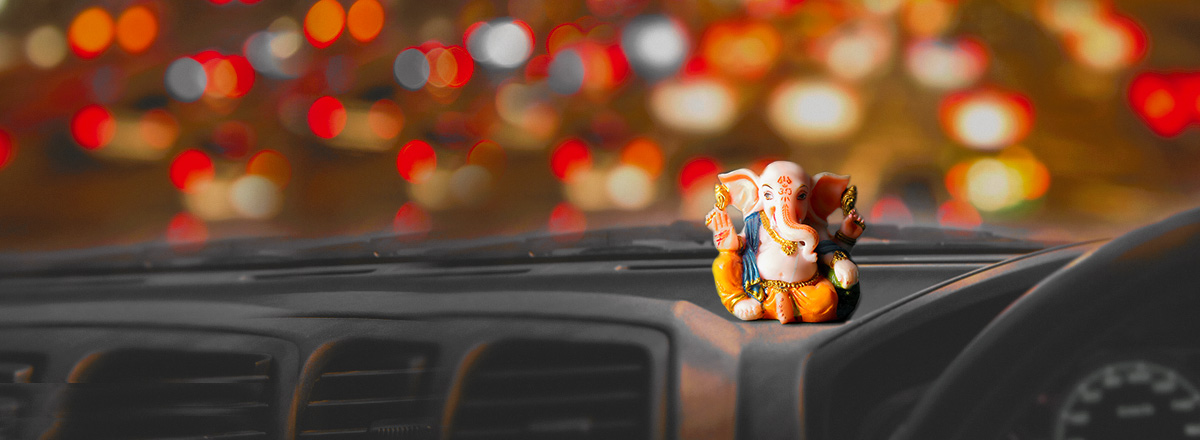Neta Devi is tightly related to Manasa Devi and both these (snake) Goddesses are mentioned in a few Indian Puranas and other sources. One of the sources (that will point you to a number of references), too, is the book entitled Myths of the Hindus & Buddhists by Sister Nivedita, which may all be read for free in Google books. Neta Devi (eye) and Manasa Devi (moon) are both related to a woman known as Behula. Behula was an archetypal Bengali woman full of love. She was the daughter-in-law of Chand Saudagar (a rich merchant) who denied worshiping Manasa Devi. According to an Indian myth, two beautiful apsaras, Usha and Aniruddha, were tricked by Manasa Devi and Neta Devi, and these two apsaras thus went to earth to be born as mortals – one as the Chand’s seventh son Lakhinder and the other one as his (Lakhinder’s) wife Behula. With their tricky plan they (Manasa and Neta) already made the six Chand’s sons die of snakebite (because he refused to worship them).
Manasa Devi was born of the Lord Shiva’s semen when Lord Shiva was aroused to passion and dropped His semen on a lotus flower (padma in Sanskrit). Manasa therefore claimed the same right to be worshiped as Lord Ganesh and Lord Skanda (Lord Ganesha’s brother known in south India, Malaysia, Singapore, etc. under the name Murugan), but Parvati did not like this. She (Manasa Devi) therefore had many quarrels with Parvati. Lord Shiva finally took Manasa Devi to a deserted place and created a companion Neta for Her from His tears. He did this because He wanted to soothe Manasa and did not want Her to be alone in Her sorrow. Thus, Manasa Devi and Neta Devi are sisters and always related to each other as TWO (that is, both are inseparable from each other).
When Chand finally yielded and started offering a flower to Manasa with his left hand (and without looking at Her idol in fear that he would displease Shiva), this made Manasa Devi so happy that She resurrected all of the Chand’s sons and restored the Chand’s fortunes.
The symbol of Manasa Devi is the sun rising over the half moon, but the half moon with the sun wedged into the half moon (not separated from it) – the symbol that looks exactly like an eye (you may see it in temples in India and in other places where Manasa Devi has Her devotees). You may also look at my website (http://www.freebsd.nfo.sk/hinduism/nagovia.htm) to see how Manasa Devi looks like. Manasa Devi is often called “the one-eyed goddess”, as Parvati burned one of Her eyes. The Sanskrit word “manasa” means “spiritual”, but it is also tightly related to the word Manasarovar (derived from two words: “mana” and “sarovara” – lake, but also the name Manasa Sarovara is used), the lake at the foot of Mt Kailash, the holiest mountain of Shaivism, Bön religion, and Buddhism.
I am sorry to say that there is not much information about Neta Devi. But if you pray to Manasa Devi, I would also suggest praying to Neta Devi.
Neta Devi is tightly related to Manasa Devi and both these (snake) Goddesses are mentioned in a few Indian Puranas and other sources. One of the sources (that will point you to a number of references), too, is the book entitled Myths of the Hindus & Buddhists bySister Nivedita, which may all be read for free in Google books. Neta Devi (eye) and Manasa Devi (moon) are both related to a woman known as Behula. Behula was an archetypal Bengali woman full of love. She was the daughter-in-law of Chand Saudagar (a rich merchant) who denied worshiping Manasa Devi. According to an Indian myth, two beautiful apsaras, Usha and Aniruddha, were tricked by Manasa Devi and Neta Devi, and these two apsaras thus went to earth to be born as mortals – one as the Chand’s seventh son Lakhinder and the other one as his (Lakhinder’s) wife Behula. With their tricky plan they (Manasa and Neta) already made the six Chand’s sons die of snakebite (because he refused to worship them).
Manasa Devi was born of the Lord Shiva’s semen when Lord Shiva was aroused to passion and dropped His semen on a lotus flower (padma in Sanskrit). Manasa therefore claimed the same right to be worshiped as Lord Ganesh and Lord Skanda (Lord Ganesha’s brother known in south India, Malaysia, Singapore, etc. under the name Murugan), but Parvati did not like this. She (Manasa Devi) therefore had many quarrels with Parvati. Lord Shiva finally took Manasa Devi to a deserted place and created a companion Neta for Her from His tears. He did this because He wanted to soothe Manasa and did not want Her to be alone in Her sorrow. Thus, Manasa Devi and Neta Devi are sisters and always related to each other as TWO (that is, both are inseparable from each other).
When Chand finally yielded and started offering a flower to Manasa with his left hand (and without looking at Her idol in fear that he would displease Shiva), this made Manasa Devi so happy that She resurrected all of the Chand’s sons and restored the Chand’s fortunes.
The symbol of Manasa Devi is the sun rising over the half moon, but the half moon with the sun wedged into the half moon (not separated from it) – the symbol that looks exactly like an eye (you may see it in temples in India and in other places where Manasa Devi has Her devotees). You may also look at my website (http://www.freebsd.nfo.sk/hinduism/nagovia.htm) to see how Manasa Devi looks like. Manasa Devi is often called “the one-eyed goddess”, as Parvati burned one of Her eyes. The Sanskrit word “manasa” means “spiritual”, but it is also tightly related to the word Manasarovar (derived from two words: “mana” and “sarovara” – lake, but also the name Manasa Sarovara is used), the lake at the foot of Mt Kailash, the holiest mountain of Shaivism, Bön religion, and Buddhism.
I am sorry to say that there is not much information about Neta Devi. But if you pray to Manasa Devi, I would also suggest praying to Neta Devi.





